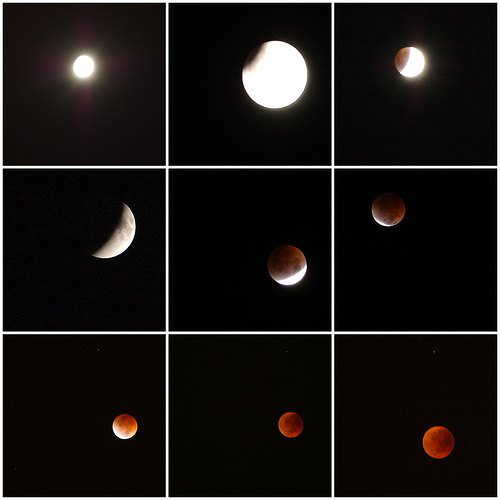Eclipses have always been a fascination for people and a reason for superstitions for a lot of years. The reason for the occurrence of lunar and solar eclipse is due to the position of the Earth and Moon with respect to the Sun. Lunar eclipses happen when the Earth lies between the Sun and Moon hence blocking the sun’s rays from reaching the moon, whereas a solar eclipse occurs when the moon lies between the Earth and sun and hence blocks the Sun’s rays partially.
Comparison chart
Types of lunar and solar eclipses
The type and extent to which the eclipse occurs can vary. Lunar eclipses are of four types - penumbral, partial or horizontal. Penumbral eclipses happen when the moon happens to fall into the penumbral shadow of the Earth, which is the outer shadow of the Earth. In this case the moon appears darker in some areas than others. A partial eclipse is seen when part of the moon enters the umbra, which is the darkest shadow of the Earth where there is no radiation from the Sun. Similarly, during a total eclipse, the moon lies totally in the umbra and completely obscured by the Earth. A horizontal eclipse is when the Sun and the eclipsed moon can be seen together at the juncture of sunrise and sunset.
Solar eclipses are of different types too. A total solar eclipse, as the name suggests, is when the Sun is completely blocked by the moon, only a faint corona radiating out from the eclipse and a partial eclipse is when the Sun is only partially blocked by the Moon. An annular eclipse is when the Sun appears as a bright ring outside the darkened circle. A rare hybrid solar eclipse is a combination of a total and annular eclipse, visible differently from different places on the Earth.
Frequency of occurrence
Since the occurrence of lunar and solar eclipses depends on the specific alignment of the Sun, earth and Moon in the same plane, total eclipses do not occur very frequently. Usually, lunar eclipses (different types) occur about twice a year or more, whereas solar eclipses (varying types) occur three to four times a year.
Visibility and Safety
A lunar eclipse is visible from any place at night. In case of a horizontal eclipse, the hue of the moon is orangish it happens at the juncture of sunrise and sunset, and visible only in a few places. It is safe to look at the moon during an eclipse with your naked eye.
A solar eclipse, on the other hand, may be visible from certain areas of the Earth, and last for only a few minutes. It is not safe to look at the Sun during an eclipse for it causes damage to the retina, and special glasses should be used to look directly at it.
Where to find safe eclipse glasses
Editor's note: I was lucky enough to catch the solar eclipse in April 2024. Safety was paramount for me so I spent quite a bit of time researching eclipse glasses. To watch the eclipse, glasses need to comply with the ISO 12312-2 international safety standards for direct viewing of the sun. I do not trust random sellers on Amazon for this. Here are some resources from the American Astronomical Society to find reliable and safe eclipse glasses: Suppliers of Safe Solar Viewers & Filters - American Astronomical Society
Pictures
Solar Eclipse Pictures

Lunar Eclipse Pictures
Duration of a solar vs lunar eclipse
A lunar eclipse may last for up to a few hours, though a solar eclipse lasts for only a few minutes



 Asteroid
Asteroid  Asteroids
Asteroids  Earth
Earth
Comments: Lunar Eclipse vs Solar Eclipse